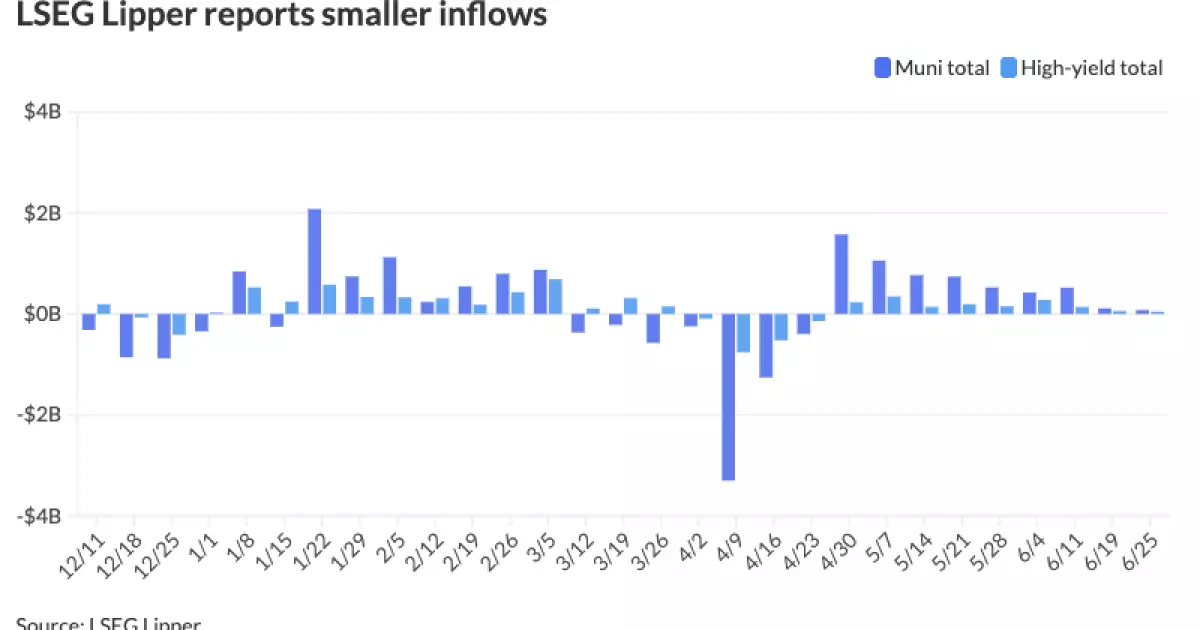Municipal bonds have often been seen as a safe haven in the world of investment, providing tax-exempt income at relatively lower yields. Yet current market conditions reveal a nuanced and turbulent landscape for these securities that belies their reputation. Despite temporary stability earlier this month, the broader story is about municipal bonds entering a turbulent phase, struggling against the twin forces of rising interest rates and political uncertainty. Investors need to examine why this market, often considered the bedrock of state and local finance, is not enjoying the same robust recovery seen in other asset classes.
Interest Rate Volatility: A Double-Edged Sword
One of the key factors affecting municipal bonds is the heightened volatility of interest rates, particularly impacting long-term maturities. Reports show that the performance of municipal bonds lags significantly behind U.S. Treasuries and investment-grade corporates. This discrepancy raises serious questions about the future attractiveness of these bonds. Currently, the yield on 30-year munis is positioned almost 340 basis points below their government counterparts. What does this mean for investors? It signifies that for every dollar invested, the return on munis has been considerably weaker compared to Treasuries, truly highlighting a critical shortcoming in their risk-reward relationship.
The fact that both USTs and corporates are performing better suggests that investor confidence is waning in municipal debt. This volatility in rates is not just a mere technicality; it reflects investor sentiment that is increasingly skeptical about the safe nature of these instruments, particularly in a climate marked by economic uncertainty and inflation concerns.
Political Factors: The Elephant in the Room
Beyond mere financial metrics, the political landscape poses significant challenges to the municipal bond market. The potential reduction in federal support for state and local governments looms like a dark cloud, suggesting that municipalities may be forced to issue more bonds to make up for revenue shortfalls. This increase in issuance, often regarded as a necessary step, can exacerbate the oversupply of bonds, further diluting their value.
When political uncertainty thrives, it hampers infrastructure and critical development projects. The perception that state and local entities might face funding shortages due to mismanagement or opaque political maneuvering creates a cognitive dissonance among investors who expect these bonds to be backed by robust governmental finance. As new bonds flood the market—currently up 16% from last year—the overstretched financial commitments could alter the dynamics of demand and supply.
Risk of Over-reliance on Reinvestment Demand
Interestingly, municipal bonds recently managed to absorb massive new issuances without losing ground, leading some analysts to celebrate a newfound resilience. While there were claims that the market has adeptly absorbed over $50 billion in new supply, one must consider whether this optimism is misplaced. The current surge in demand for reinvestments does not erase the underlying uncertainties or flaws in the overall economic situation.
Counterintuitively, this reliance on reinvestment demand raises the stakes for future performance. If investors lose faith and pull back, the fallout could be detrimental, spiraling into a liquidity crisis for municipal debts. This is particularly concerning as the market hurtles toward historically attractive valuations but at the same time runs the risk of faltering demand due to external economic pressures or structural issues in governance.
Investor Confidence: A Fragile Emotion
Adding to the dilemma for municipal bonds is the ebb and flow of investor confidence, which remains precariously balanced. Recent inflows into municipal bond mutual funds signify a slight uptick in interest; however, the levels of optimism are tepid at best. The stubbornly high yields on taxable money funds present a siren call for investors seeking better returns in a competitive environment. Moreover, the ASIFMA Swap Index’s recent decline reflects a cautious outlook among investors—if they’re unwilling to deploy their capital into what are traditionally considered safe harbor investments, what does that say about the fundamental health of the municipal bond market?
The expectation surrounding yields and the intricate dance of political and financial norms cast a long shadow over municipal bonds. What remains critical is not just the immediate numbers but the underlying perceptions of risk and stability. Trust, once lost, is not easily regained.
Municipal bonds are navigating treacherous waters. Stakeholders must not just analyze numbers but also delve into the implications of political risks, changing economic landscapes, and fragile investor confidence. As the landscape continues to change, only those who remain vigilant and adaptive will triumph in this uncertain market.


Leave a Reply